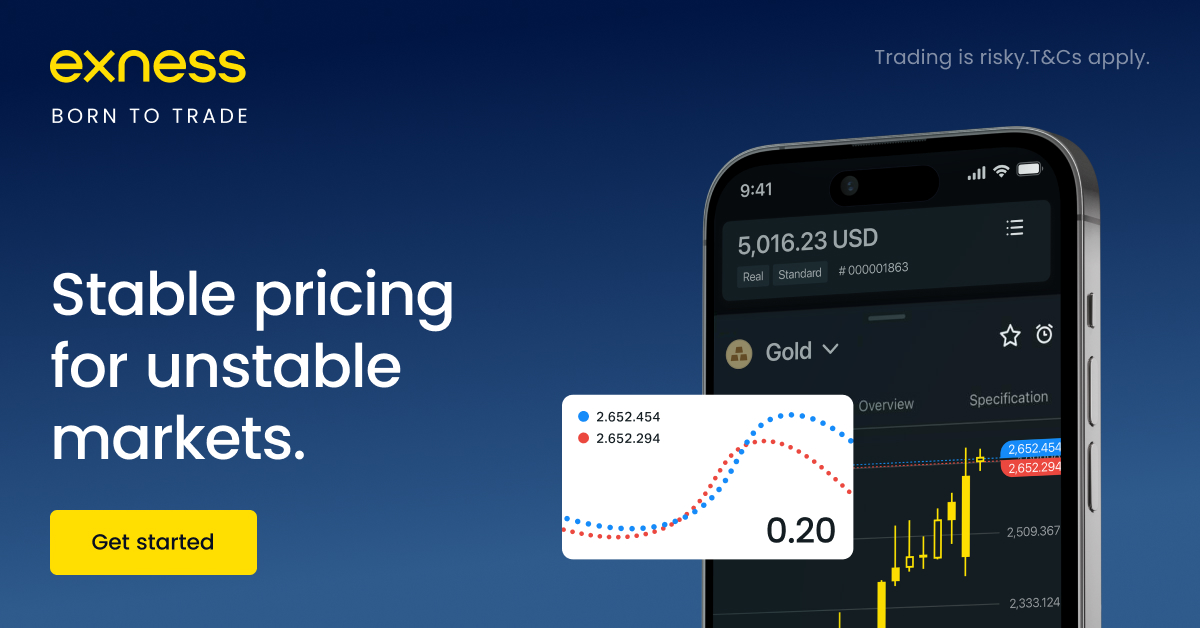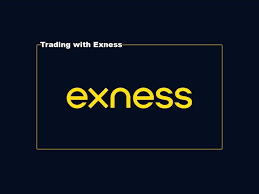
6 minute read
pepperstone standard vs razor? Which is better account?
In the crowded arena of forex and CFD trading, Pepperstone stands as a powerhouse broker, trusted by traders worldwide for its transparency, execution speed, and institutional-grade liquidity. But once you've decided to trade with Pepperstone, a crucial decision awaits:
🧠 Should you open a Standard account or a Razor account?
This isn't a small decision. The account type you choose will directly affect your spreads, commissions, strategy execution, and even your profitability.
In this deep-dive, we’ll dissect every component of the Pepperstone Standard vs Razor account battle, from spreads and commission structures to execution speeds, trading styles, and strategic alignment. Whether you’re a scalper, swing trader, or position holder, you’ll finish this article knowing exactly which account is engineered for your edge.
🏅 3 Best Forex Brokers
1️⃣ Exness: Open Account Trading | Go to broker
2️⃣ XM: Open Account Trading | Go to broker
3️⃣ JustMarkets: Open Account Trading | Go to broker

🔍 What Are Pepperstone’s Account Types?
Let’s begin with clarity. Pepperstone offers three main types of accounts:
⚙️ Standard Account – No commissions, spreads are marked-up.
🔪 Razor Account – Ultra-tight spreads, commission-based.
🧠 Professional Account – Higher leverage, available to qualifying traders only.
This article focuses on Standard vs Razor, the two primary accounts available to most traders globally.
⚙️ Pepperstone Standard Account – Overview
The Standard Account is tailored for beginner to intermediate traders looking for simplicity and ease.
🧩 Key Features:
✅ No commission charges
🌐 Spreads start from 1.0 – 1.3 pips (EUR/USD)
💱 Access to all trading instruments: forex, indices, commodities, crypto, shares
🛠️ Compatible with MetaTrader 4, 5, and cTrader
🛡️ Negative balance protection (retail clients)
💹 Minimum trade size: 0.01 lot
🧘 User-friendly, easy for casual trading
With the Standard Account, the spread includes Pepperstone's markup, which acts as their revenue source. You pay no additional commission per trade.
It’s simple, but not always ideal for short-term traders or scalpers.
🔪 Pepperstone Razor Account – Overview
The Razor Account is built for serious traders, algorithmic systems, and scalpers who demand the tightest possible pricing and fastest execution.
🧩 Key Features:
💰 Raw interbank spreads from 0.0 pips (EUR/USD)
💵 Commission-based: $7 per round turn (per lot)
🚀 Lightning-fast execution (low latency)
🤖 Best suited for scalping, day trading, and high-frequency strategies
📊 Market depth on cTrader and MetaTrader 5
⚡ Integrated with institutional-grade liquidity providers
This account is built for precision and performance. You’ll see spreads near zero during peak liquidity, but pay a small fixed commission — a tradeoff that often results in lower total trading costs.
🥊 Razor vs Standard: Spread Comparison
This is where the war gets serious. Spreads directly affect profit per pip and determine entry/exit friction for every trade.
Razor Account:
EUR/USD: 0.0 – 0.2 pips typical
GBP/USD: 0.2 – 0.4 pips
XAU/USD: 0.10 – 0.25
Raw spreads = lightning execution
But remember: you're paying $3.5 per side (per lot) on MetaTrader, or $6 on cTrader (depending on platform and region).
Standard Account:
EUR/USD: 1.0 – 1.3 pips
GBP/USD: 1.2 – 1.6 pips
XAU/USD: 1.0 – 1.4
No commission, but all fees are embedded in spread
🧠 Verdict: If you trade large volume, tight take-profits, or scalping, Razor wins. If you trade slowly or occasionally, Standard is more manageable.

💸 Commission Structure: Clarity on Costs
Let’s break down how each account makes you pay.
🔧 Razor:
📉 Commission-based
💲 $3.50 per side = $7 per round-turn per standard lot (MetaTrader)
💲 $6 per round-turn (cTrader platform)
☑️ Higher transparency
⚙️ Standard:
🆓 No commission
👀 Mark-up included in spreads
☁️ Less visible cost structure
While Razor may sound costlier, for frequent traders, the tight spreads often result in lower total cost compared to Standard.
🧠 Which Account Suits What Type of Trader?
Let’s cut to the chase: you want the account that suits your style, speed, and strategy.
🧘 The Standard Account Is Ideal If:
You are a beginner or casual trader
You trade less frequently (a few times per week/month)
You prefer simplicity over complexity
You don’t need ultra-tight spreads
You’re not sensitive to slight cost differences
You trade longer-term: swing trading or position holding
⚡ The Razor Account Is Ideal If:
You’re a day trader, scalper, or algo-trader
You make frequent trades daily or weekly
You need tightest pricing for small pip targets
You use EAs, bots, or APIs
You want maximum transparency and control
🔥 Pro Tip: If your average trade size is >1 lot and you trade frequently, Razor almost always ends up cheaper.
🧪 Execution Speed & Platform Integration
Speed kills — in both war and trading.
⚡ Razor Account:
Ultra-low latency
Direct connection to Equinix NY4 servers
Faster execution on MetaTrader & cTrader
Institutional liquidity flow
Fewer requotes, less slippage
⚙️ Standard Account:
Fast, but not ultra-fast
More spread-based execution, still high quality
Great for retail execution needs
If you're trading high volatility events or scalping 5–10 pips, even a 50ms delay can cost you. Razor gives you the edge here.
📚 Learning Curve & User Experience
Not every trader is tech-savvy or data-driven. Your learning curve matters.
👶 Standard:
Simpler to manage
No need to calculate commissions
Easier to understand P/L on trades
Beginner-friendly
🧠 Razor:
Requires understanding of commission structures
More data to process (especially on cTrader)
Requires better cost control awareness
If you’re new, don’t underestimate simplicity. It helps you focus on strategy rather than micro-calculations.
🔐 Risk Management: Stop-Outs, Margin, Leverage
Good news: both accounts share the same risk framework based on your regulatory region.
🔄 Leverage: Up to 1:500 (international), or 1:30 (regulated zones like UK/EU/AUS)
🛑 Stop-out level: 50%
💼 Margin requirements: Same for both accounts
🛡️ Negative balance protection for retail clients
So, you don’t sacrifice risk controls or leverage by choosing one over the other. Your region determines the limits — not the account type.
📈 Real World Cost Comparison Example
Let’s say you're trading EUR/USD, 1 lot per trade.
AccountSpreadCommissionTotal Cost (1 trade)Standard1.2 pips$0~$12Razor0.2 pips$7~$9
If you do 100 trades/month, that’s a $300 difference. For high-volume traders, this adds up fast.
🏆 Final Verdict: Standard vs Razor – Which Account Wins?
Let’s not play it safe. Here’s the real answer:
🔪 Choose Razor Account if:
You're experienced
You trade daily
You scalp or day trade
You run EAs or bots
You value raw spreads and control
⚙️ Choose Standard Account if:
You're a beginner
You trade casually
You prefer simplicity
You hate calculating commissions
There is no absolute winner. There is only the account that aligns with your trading strategy, frequency, and mindset.

Read more:
how to connect EXNESS demo account to MT5 by Exness Trading Tips
how to use EXNESS trading app for beginners by Exness Trading Tips
how to use EXNESS trading app on android by Exness Trading Tips
How to create a strategy in EXNESS Social Trading by Exness Trading Tips
How to become an EXNESS social trader by Exness Trading Tips
🎤 Final Thoughts: Don’t Choose Blindly
Don’t select an account based on marketing hype or someone else’s preference. Choose the one that fits your system.
🧩 Razor offers precision and savings for high-volume traders
🧩 Standard offers simplicity and comfort for beginners and lower-frequency traders
If you’re unsure — test both using demo accounts. The best way to learn is to execute and analyze.
When used correctly, either account can be the foundation of your trading success. But used incorrectly, both can lead to losses.
Know your edge. Trade accordingly. Choose wisely.










